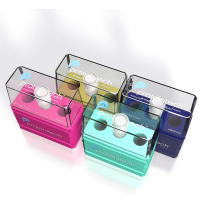Gene transfer into the murine myocardium represents a powerful strategy for studying the mechanisms and potential treatments of cardiac disease. The mouse can be genetically engineered precisely, and cardiac function can be examined at both the organ and the cellular level (1 ). Several mouse models have been developed that mimic features of acquired heart disease, such as hypertrophy, contractile dysfunction, or arrhythmias. Also, models of cardiac developmental defects as well as dilated and hypertrophic cardiomyopathy have been created by overexpression or deletion of specific genes. Gene transfer into the myocardium of such models of cardiac disease has already given insight into molecular mechanisms of cardiac dysfunction at the cellular level (2 ). Furthermore, high-efficiency, long-term expression of foreign genes in the neonatal and embryonic heart is particularly valuable as a strategy for rescue of the various murine cardiac disease models. Finally, gene transfer to the myocardium may also allow genetic targeting of the heart prenatally and postnatally by virus-mediated delivery of Cre recombinase to mice with floxed alleles (3 ).






